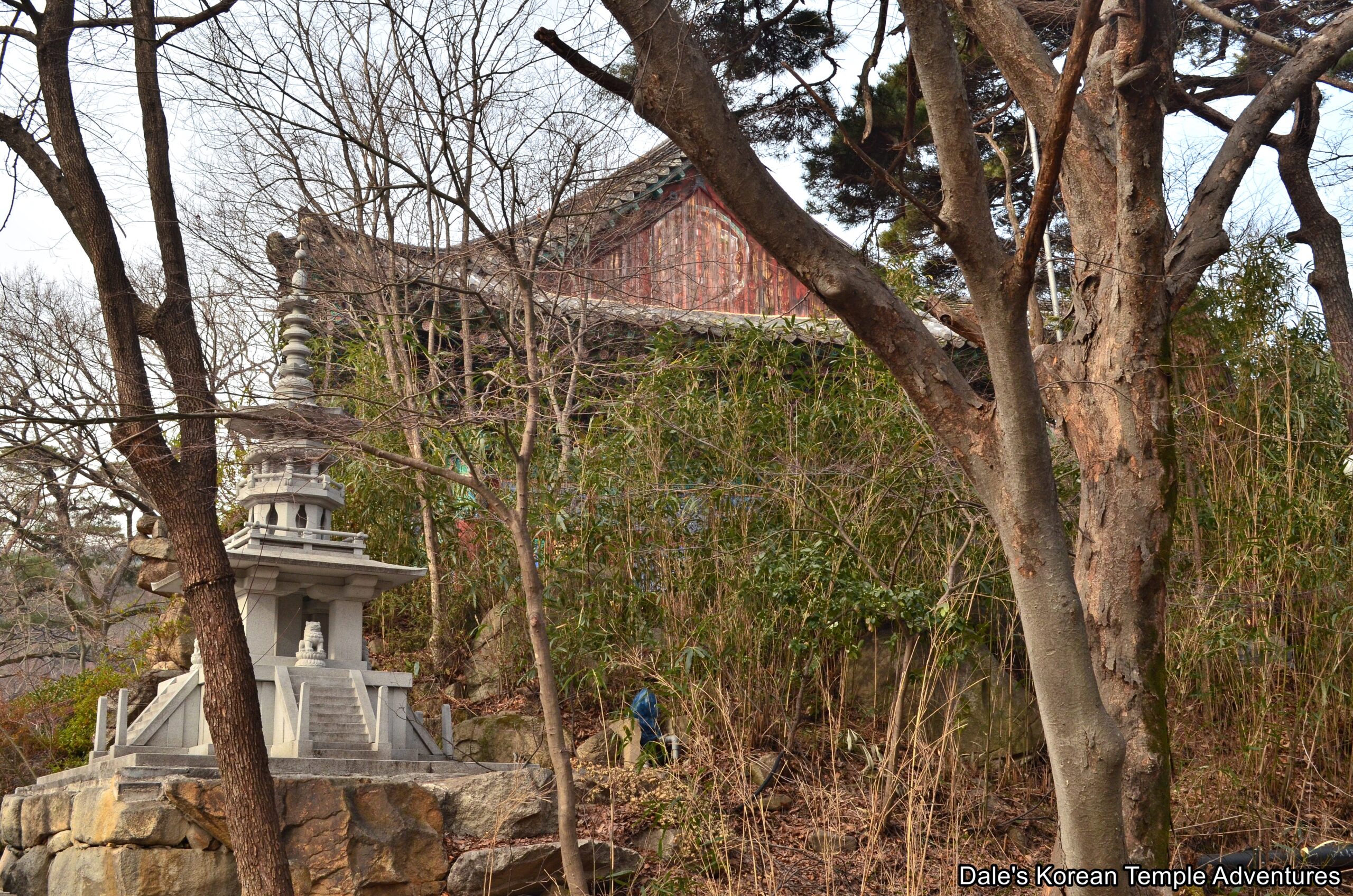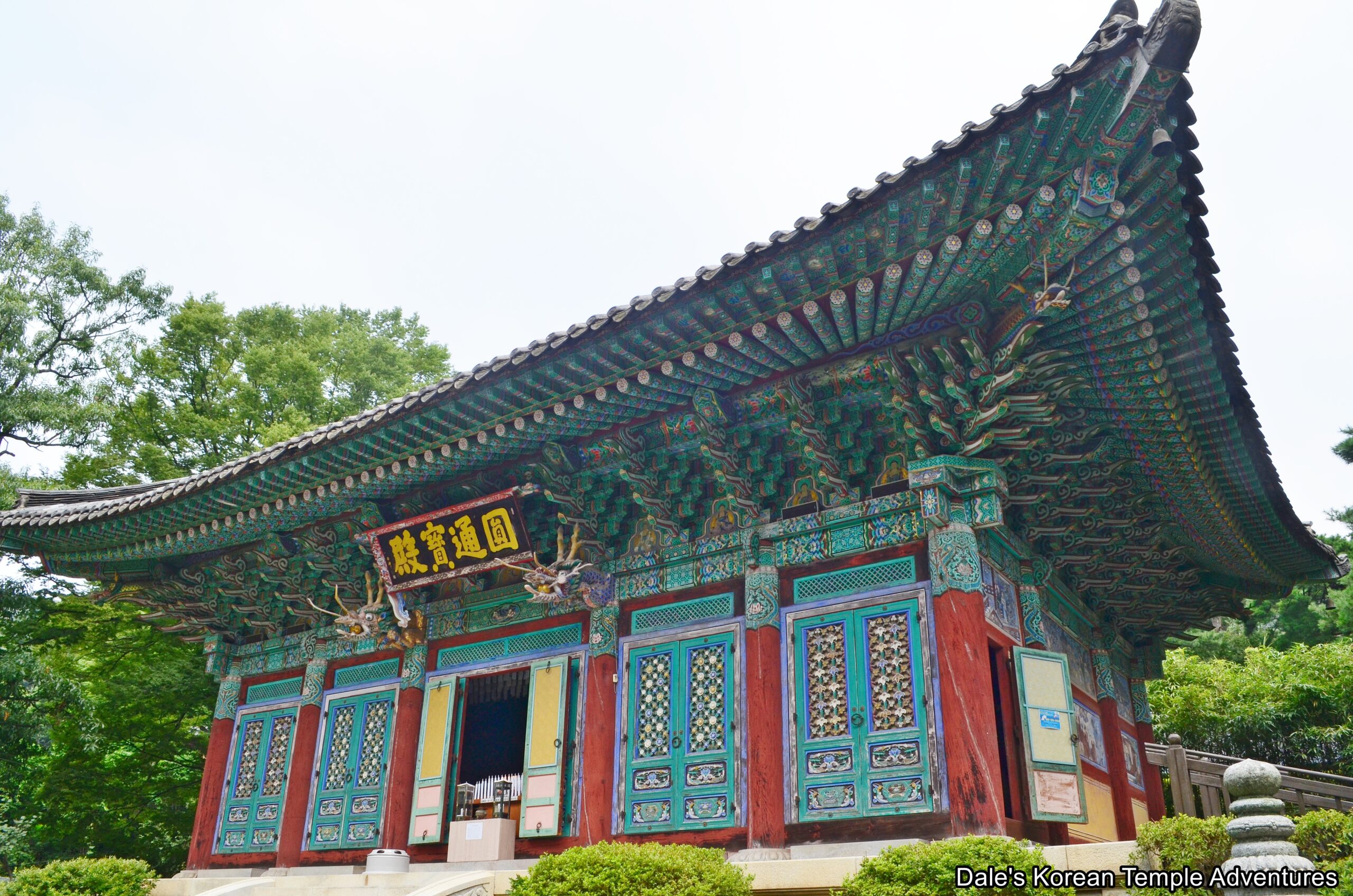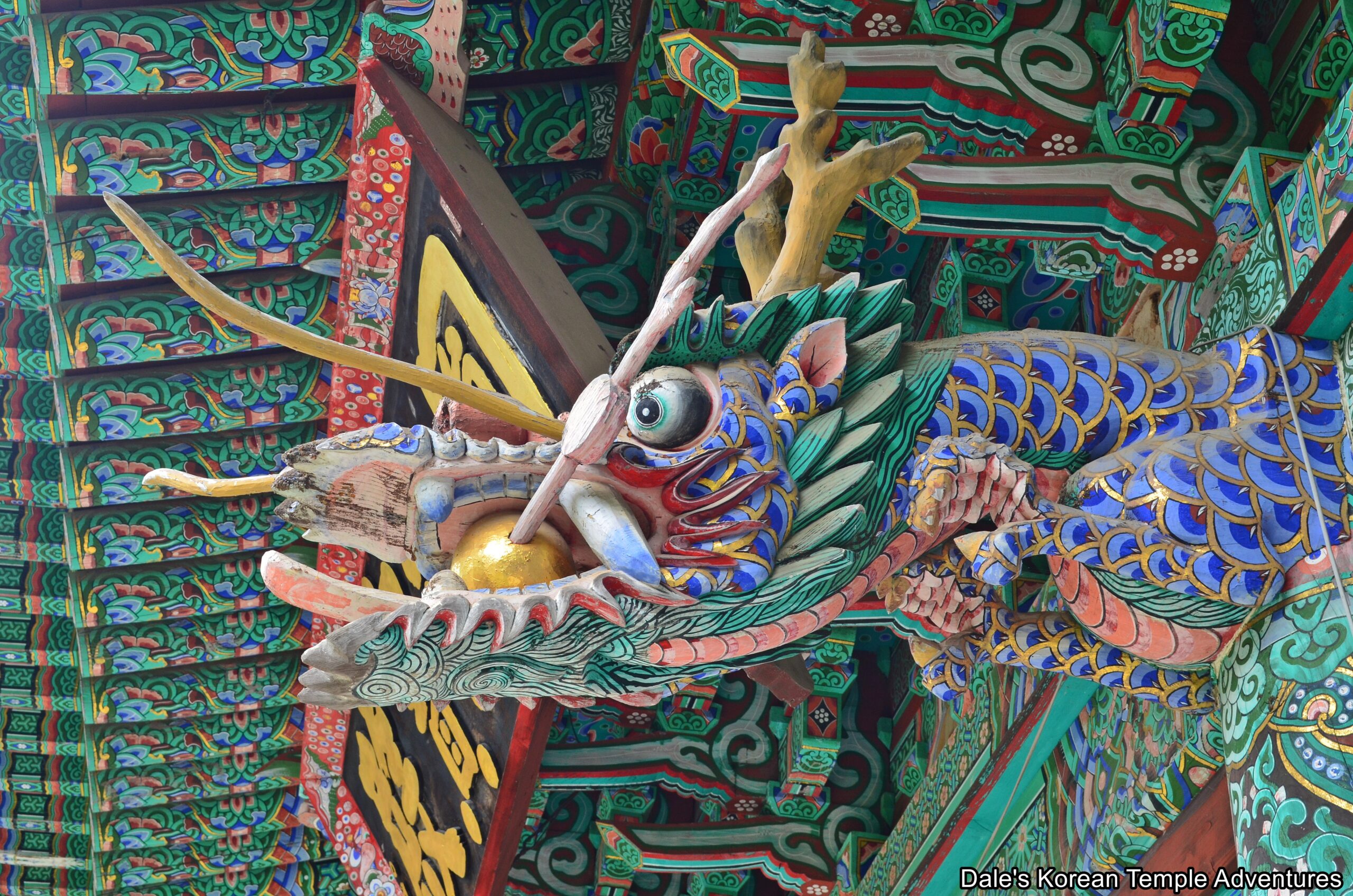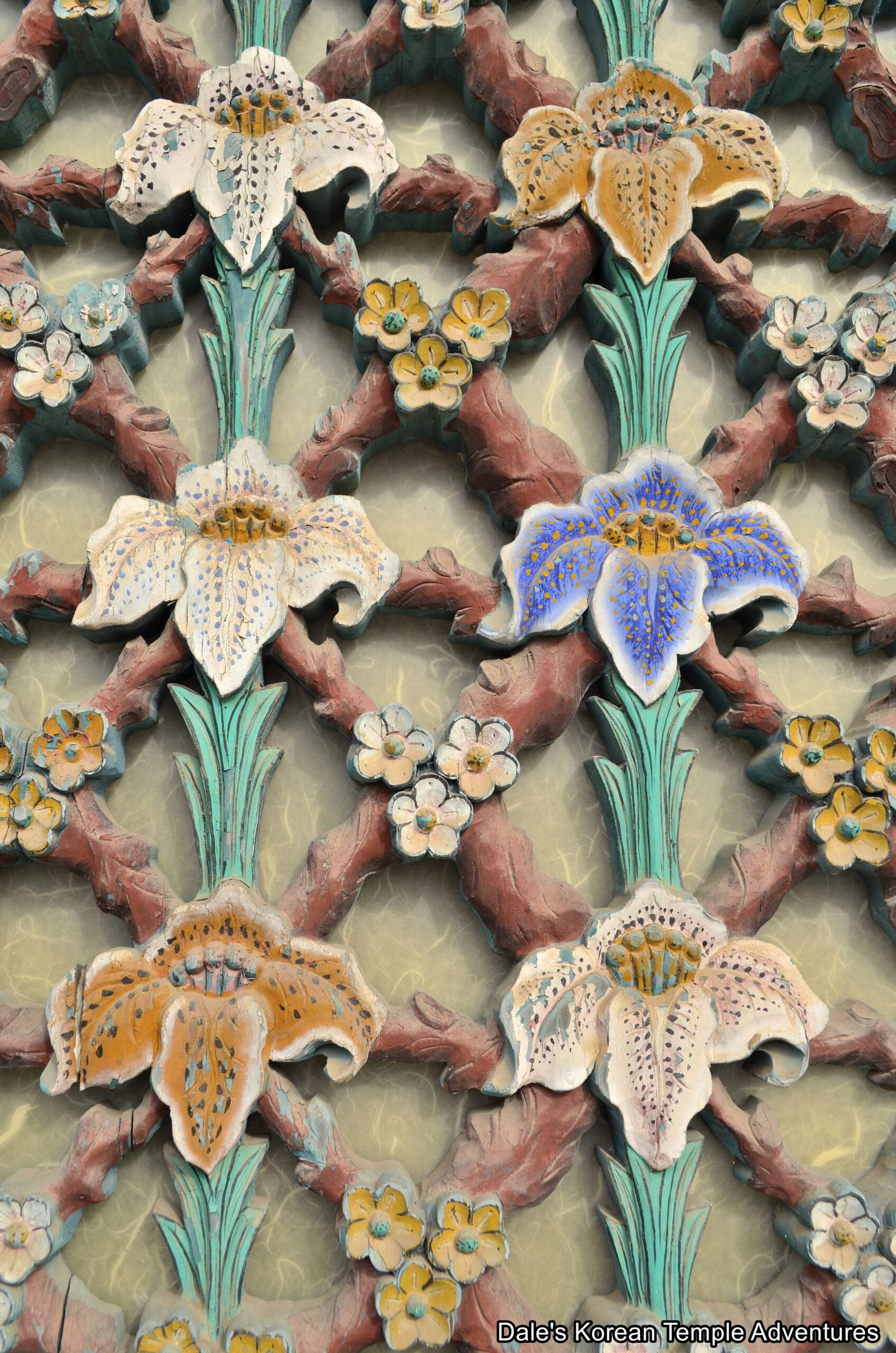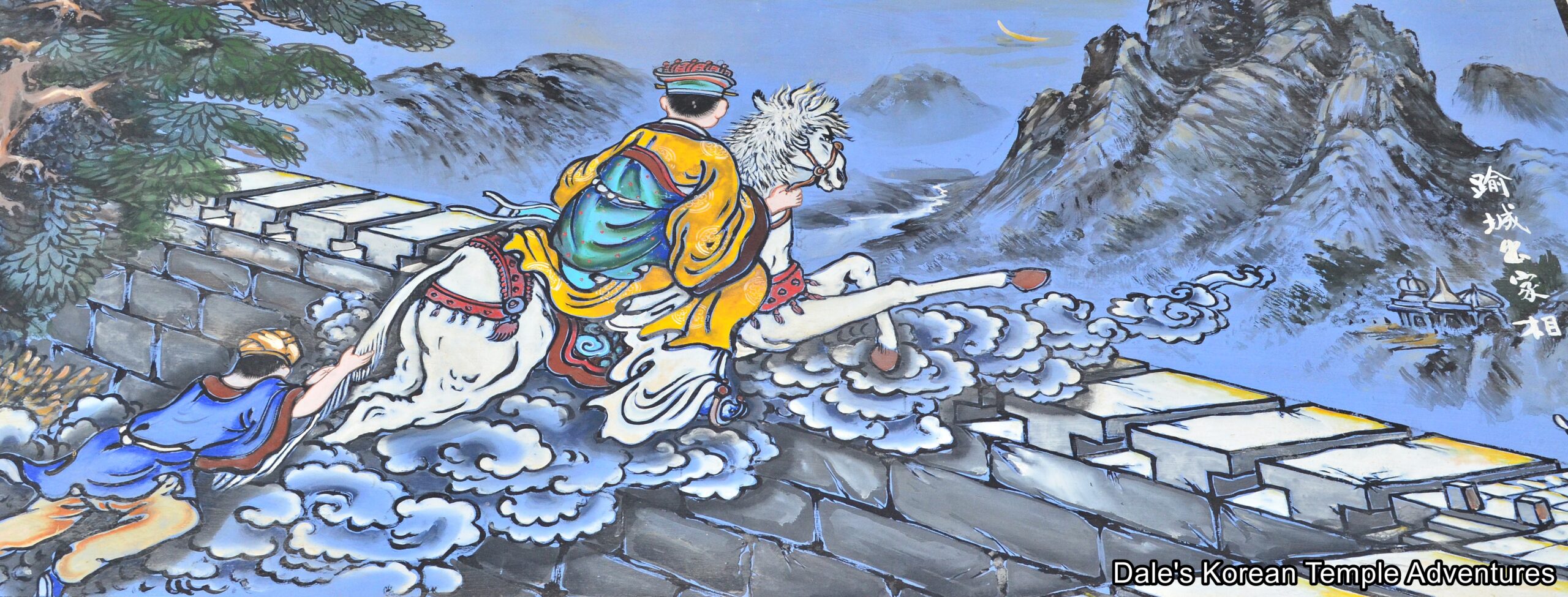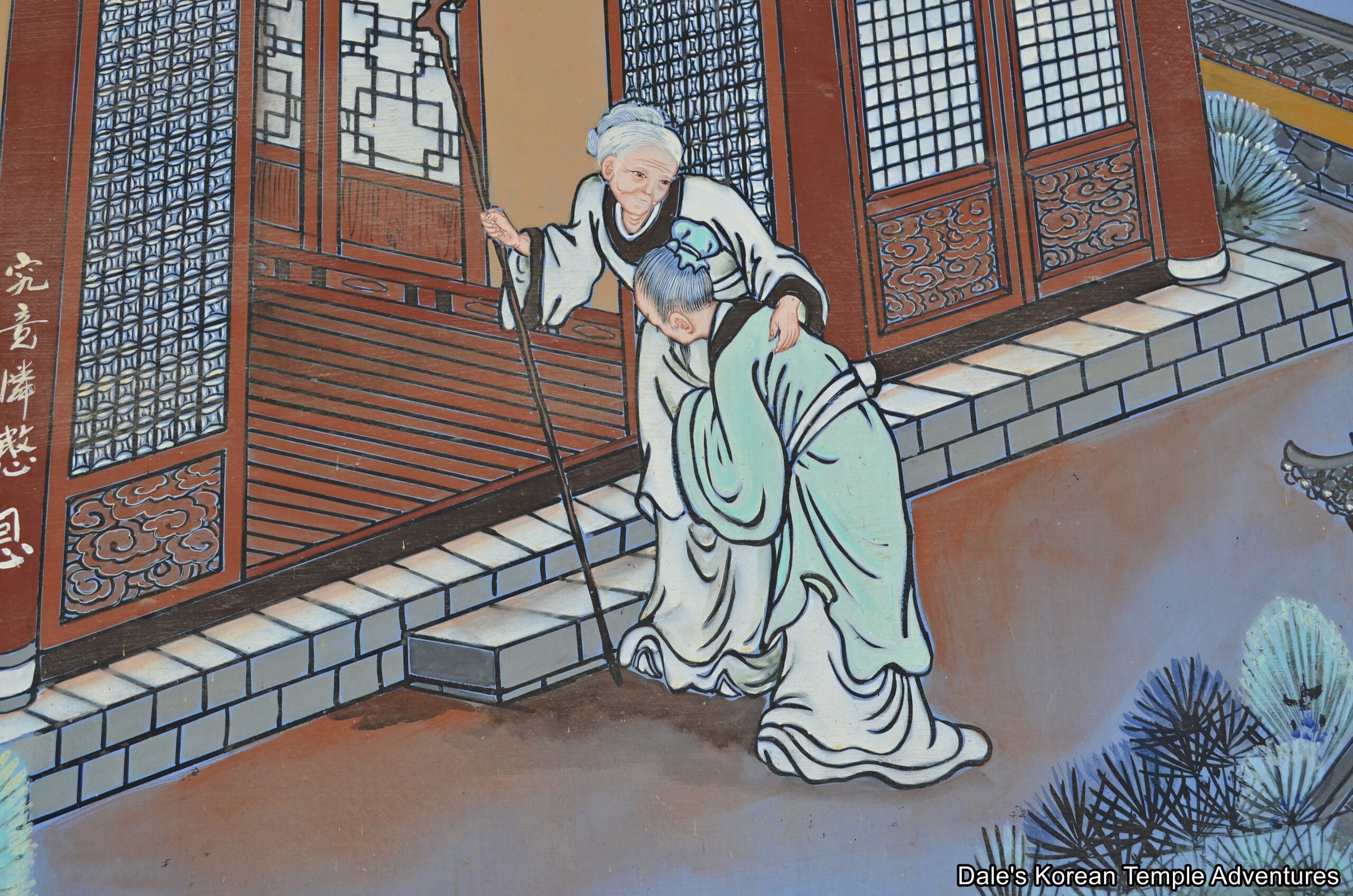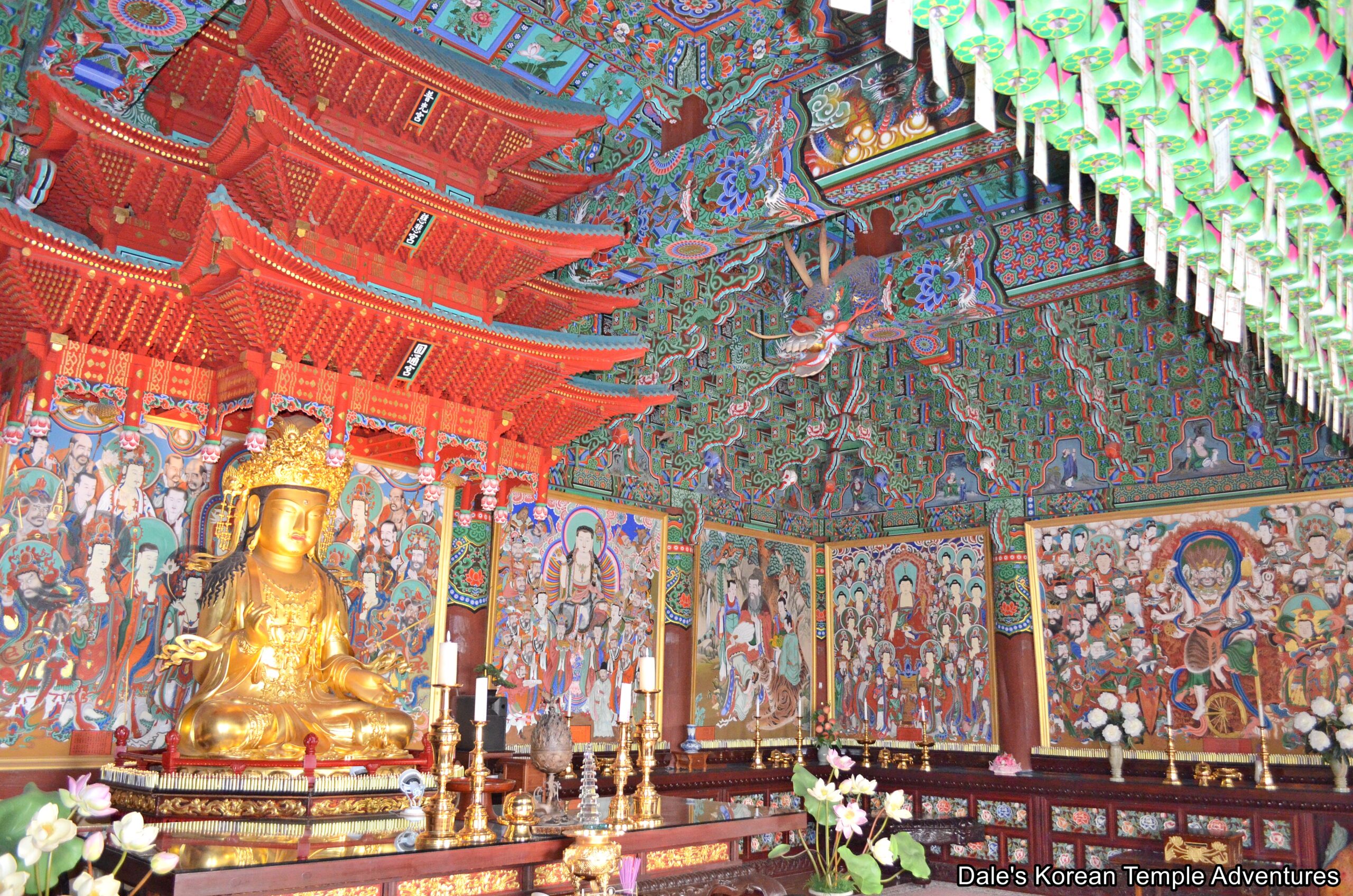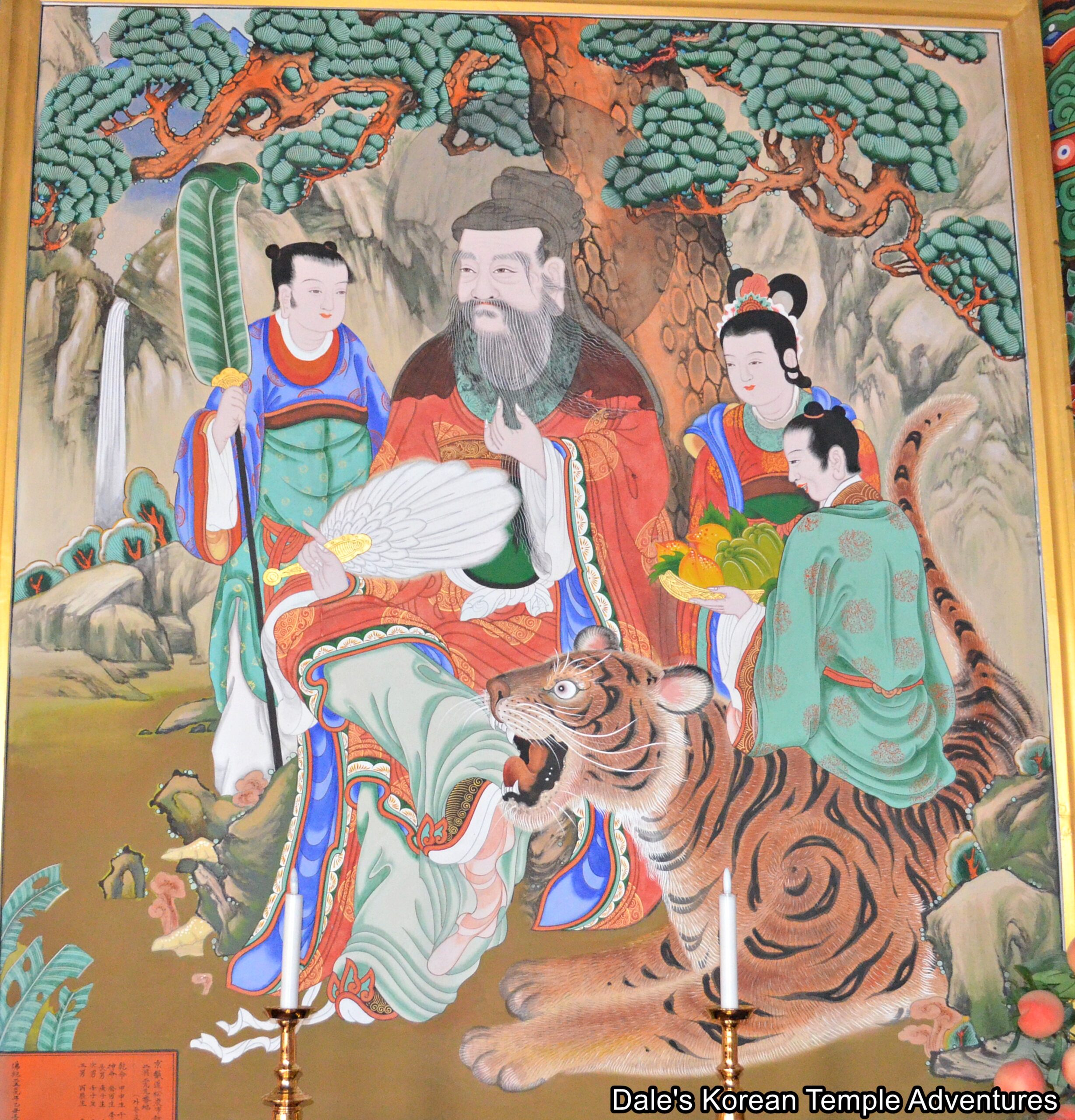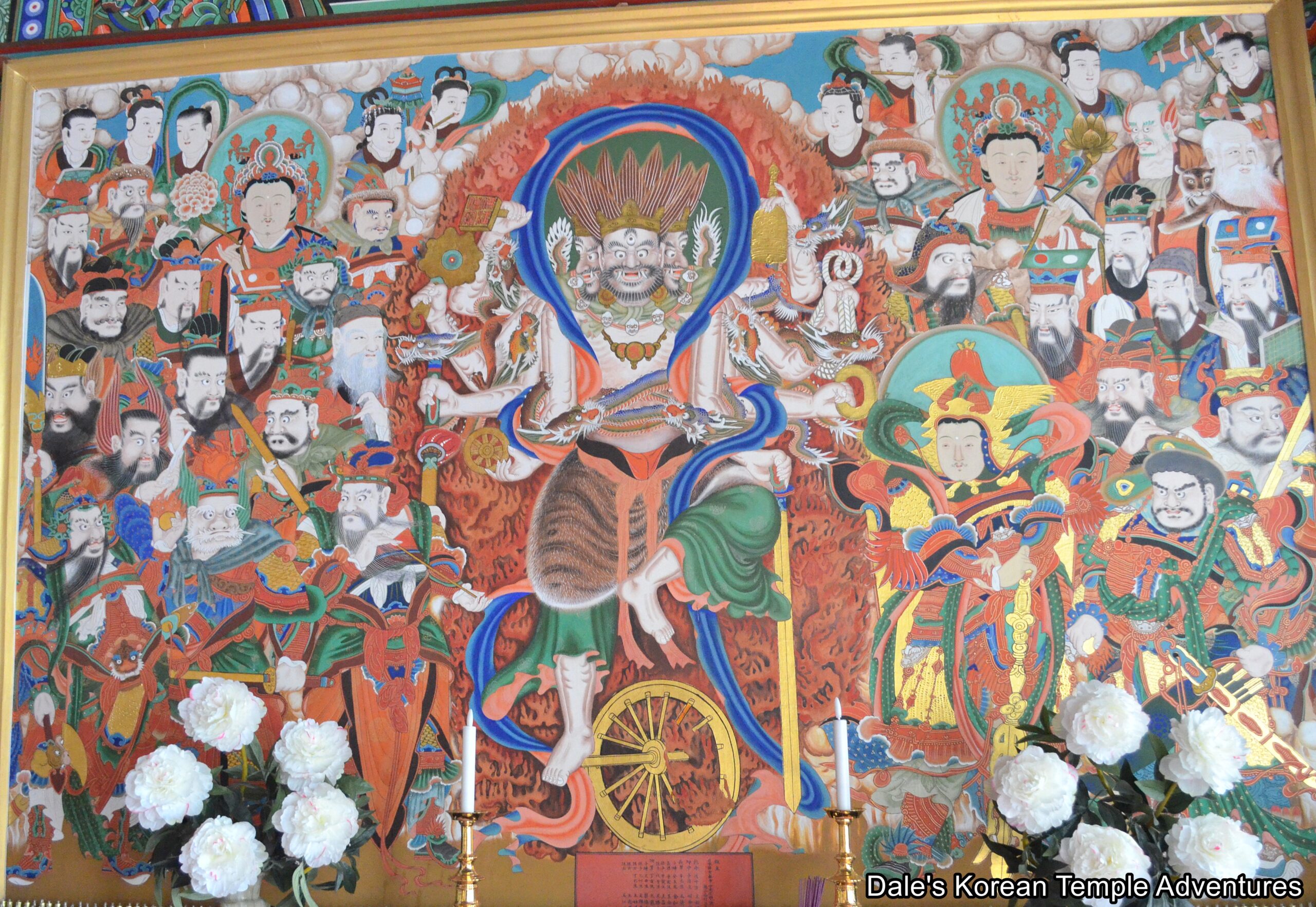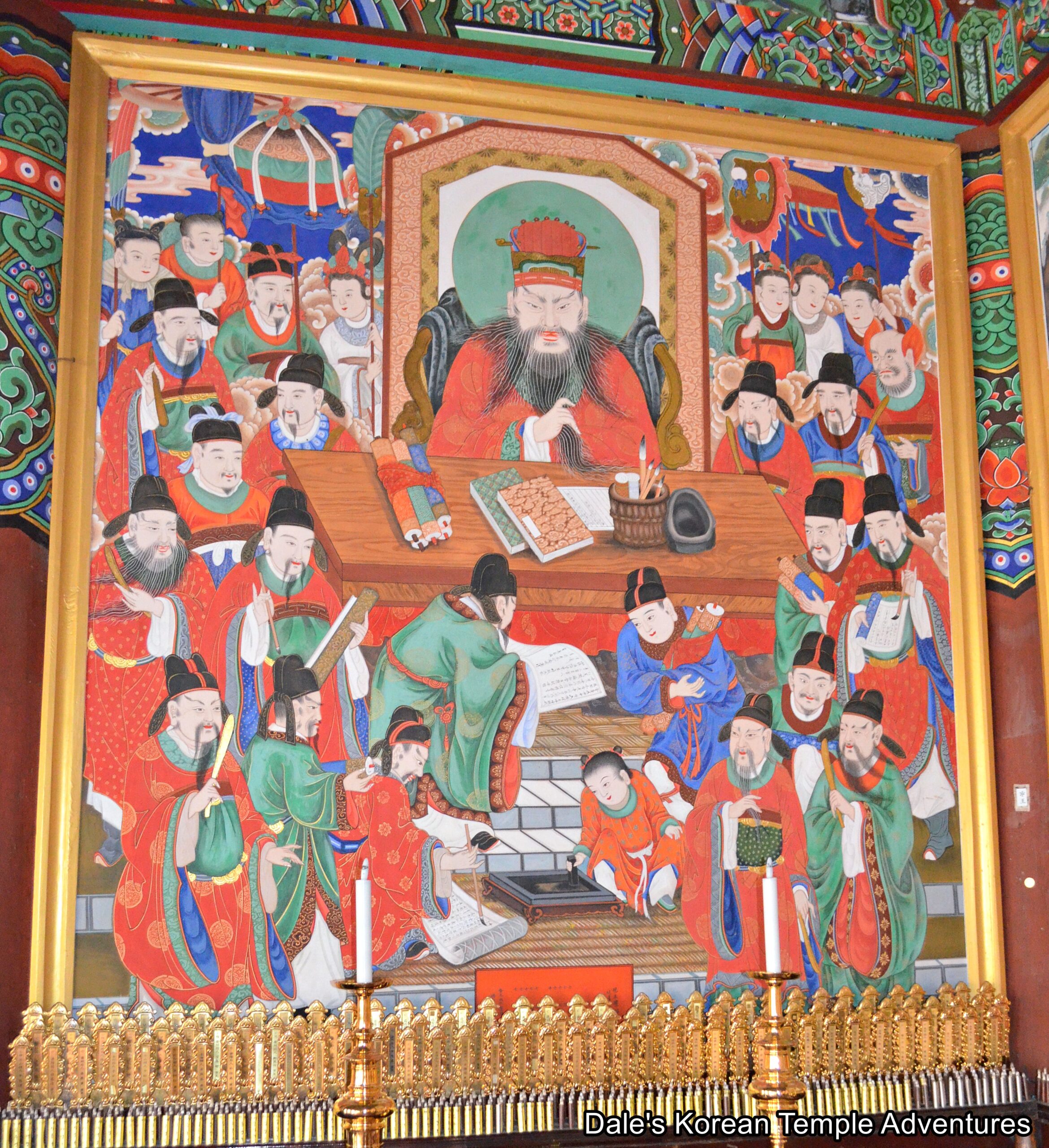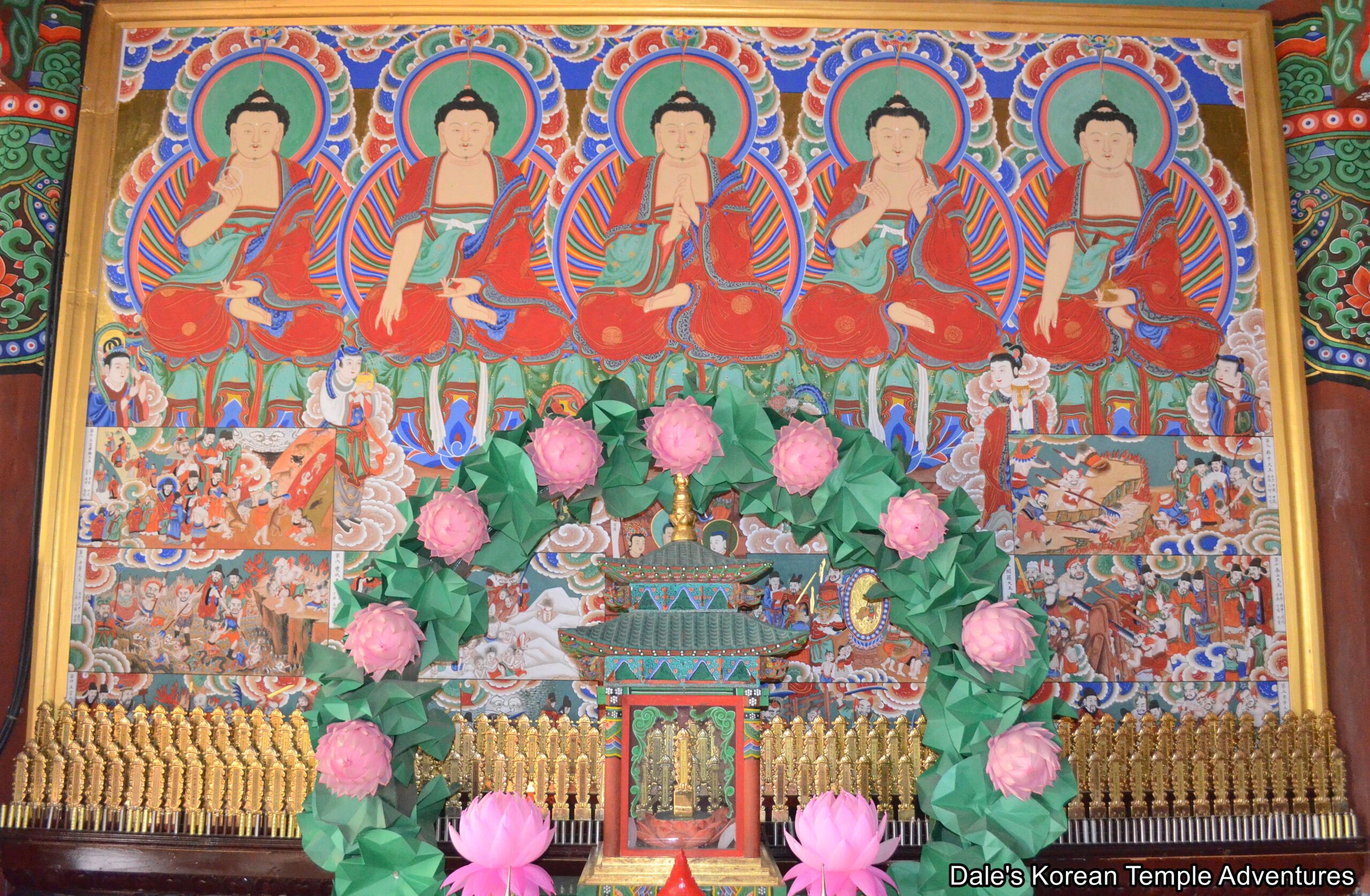Seonsuam Hermitage – 선수암 (Yesan, Chungcheongnam-do)
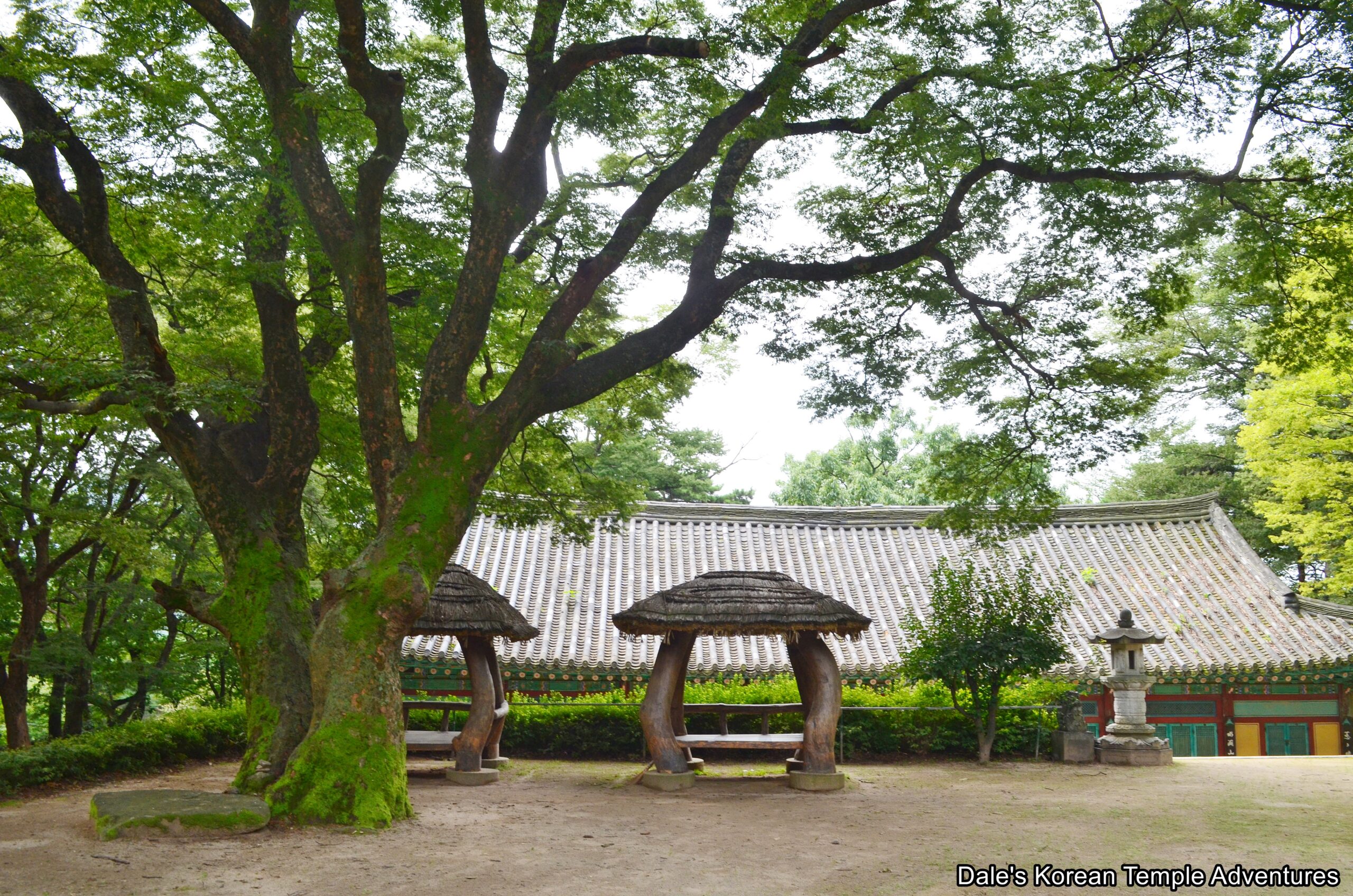
Hermitage History
Seonsuam Hermitage is located on the Sudeoksa Temple grounds in Yesan, Chungcheongnam-do in the southern foothills of Mt. Deoksungsan (495.2 m). The hermitage is also a nunnery for Buddhist nuns. Very little is known about the hermitage’s history.
Hermitage Layout
Just to the southwest of the main temple courtyard at Sudeoksa Temple, you’ll find Seonsuam Hermitage. As you first approach the entry to the hermitage, which is located just to the left of the Sacheonwangmun Gate for Sudeoksa Temple, you’ll notice a miniature replica of Dabo-tap Pagoda of Bulguksa Temple fame halfway up the pathway. Nestled under towering trees, the pagoda is an exact replica of the stone monument but just a quarter of its original size.
Finally entering the hermitage’s main courtyard, you’ll notice the large main hall to your right with the nuns’ dorms off to the left. The Wontongbo-jeon Hall’s exterior is beautifully adorned with two different sets of murals. The upper set is the vibrant Palsang-do (The Eight Scenes from the Buddha’s Life), while the lower set depicts the various stages of a person’s life. The floral latticework on the front doors are stunning.
Stepping inside the Wontongbo-jeon Hall, and seated all alone on the main altar, is a large image dedicated to Gwanseeum-bosal (The Bodhisattva of Compassion). The entire interior of the main hall is adorned with various murals. To the right of the main altar are a set of four murals. The first of these paintings is dedicated to Jijang-bosal (The Bodhisattva of the Afterlife), followed by one dedicated to Sanshin (The Mountain Spirit), another dedicated to Chilseong (The Seven Stars), and the last being a beautiful Shinjung Taenghwa (Guardian Mural).
To the left of the main altar, on the other hand, is another collection of Buddhist murals. The first of these four is dedicated to a multi-armed and headed Gwanseeum-bosal. The next painting is an older mural dedicated to Dokseong (The Lonely Saint), followed by a painting dedicated to the Siwang (The Ten Kings of the Underworld), and a Gamno-do (Sweet Dew Mural).
It should be noted that during my visit to Seonsuam Hermitage, I met one of the nicest nuns (or monks for that matter) at any temple or hermitage in Korea. She took the time to explain some of the details behind each painting inside the Wontongbo-jeon Hall. Also, she gave me a beautiful wood panel piece filled with a dancheong design. It was a great experience.
How To Get There
To get to Seonsuam Hermitage, you’ll first need to get to Sudeoksa Temple. To get to Sudeoksa Temple, you’ll need to take a bus from the Yesan Intercity Bus Terminal. From this terminal, you can take a rural bus to get to Sudeoksa Temple. Here is a list of potential buses that you can take: Bus #553 (8:20), Bus #547 (9:40), Bus #558 (10:50, 17:35), Bus #551 (12:00, 15:00), Bus #557 (13:20), Bus #549 (14:00), Bus #555 (15:55), Bus #556 (19:15). These buses will take about an hour and forty minutes to get to the temple.
Once at Sudeoksa Temple, make your way towards the main temple courtyard. Just before the Sacheonwangmun Gate, hang a left and head towards Seonsuam Hermitage. It’s about 100 metres up the pathway.
Overall Rating: 3/10
Seonsuam Hermitage is well-taken care of as is evident of the well-manicured grounds. In addition to all of this natural beauty, the hermitage also houses a beautiful collection of artwork inside the main hall. There’s also a large, imposing image of a feminine-looking statue of Gwanseeum-bosal (The Bodhisattva of Compassion) on the main altar. So if you’re visiting the neighbouring Sudeoksa Temple, you should definitely drop by Seonsuam Hermitage along they way.
